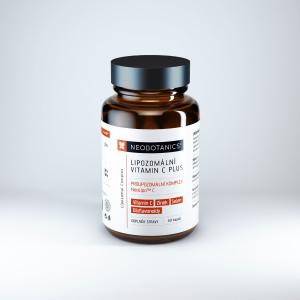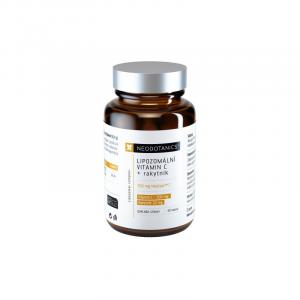
How to Prevent Armpit Pain and What to Do When It Occurs

What Can Underarm Pain Mean? An Unexpected Discomfort Deserving Attention
Underarm pain is among the less common but all the more concerning health issues. It's not a place where we'd normally expect pain, which can make it even more surprising when sharp stabbing, pulling pressure, or dull pain appears out of nowhere without an obvious cause. Sudden underarm pain can be startling, but persistent pain lasting for weeks can also be a source of anxiety. What could actually be happening in the underarm area, and how can you tell when it's time to pay attention?
Why Does the Underarm Hurt?
The underarm is an area that contains not only numerous sweat glands but also a large number of lymph nodes, nerve endings, and soft tissues. Any irritation, inflammation, or mechanical overload in this area can manifest as pain. It could be something trivial, like skin irritation after shaving, but it could also be a symptom of something more serious, such as a problem with the lymph nodes in the underarm or referred pain from another part of the body.
One of the common questions is what pain in the underarm without a lump means. When a lump appears in the underarm, most people think of swollen lymph nodes, possibly a cyst or an abscess. However, if the pain persists without any palpable mass, it can be even more confusing. It means the problem is hidden deeper—in the nerves, muscles, or areas not visible or tangible at first glance.
Lymph Nodes Under Surveillance
Lymph nodes play a crucial role in our immune system. They function as filters, capturing bacteria, viruses, and other foreign substances circulating in the lymph. When they are overloaded or fighting an infection, they can swell and become painful. Pain in the lymph nodes in the underarm can thus be a reaction to a common cold, flu, or inflammation in the chest, shoulder, or arm area.
In some cases, however, it might be a reaction to more serious conditions, such as autoimmune disorders or even cancer. It's important to watch for other symptoms—such as night sweats, fever, unexplained weight loss, or persistent fatigue. In such cases, visiting a doctor is advisable.
On the other hand, it's not uncommon for lymph node pain to arise from physical exertion, for instance, after prolonged weightlifting, which can lead to straining the pectoral muscles extending to the underarm. Such pain is usually dull, symmetrical, and disappears within a few days.
When Pain Comes Suddenly
Sudden pain in the underarm is often associated with nerve irritation or pinching. A typical example is the so-called cervicobrachial syndrome—a condition where nerves emanating from the cervical spine are compressed, and the pain radiates to the shoulder, arm, and indeed the underarm. It can be a sharp, burning, or electrifying pain that worsens with certain movements or changes in body position.
Similarly, pain can arise from inflammation of tendons or attachments in the shoulder joint area. Although the problem originates in the shoulder, patients may feel it more in the underarm. This type of pain often extends to the upper chest or back.
A real-life example is the story of Mrs. Lenka, a forty-year-old woman who began experiencing sharp pain in her left underarm while driving. Initially, she attributed it to poor posture or strain, but the pain persisted, eventually prompting her to see a doctor. After a series of examinations, it was found that she had a herniated cervical disc compressing a nerve leading to the arm. The underarm pain was merely a "reflection" of a problem in a completely different part of the body.
Persistent Pain That Doesn't Go Away
A special chapter is long-term underarm pain, which persists for weeks or even months without an apparent cause. Such pain is often associated with chronic inflammation, hormonal changes (for example, during menopause), or functional disorders of the spine and posture. In women, it may occur in connection with the menstrual cycle—hormonal changes can cause breast tissue enlargement and associated tension in the underarm.
Psychosomatics often play an important role in these cases. Long-term stress, tension, and anxiety can "settle" in specific muscle groups, which then become overloaded and painful. The underarm, as an area connecting the upper limbs with the chest, is among places affected by postural and emotional stress.
Sometimes the cause is hidden in everyday habits—such as wearing a tight bra, incorrect exercise technique, or unilateral strain at work, where one arm performs repetitive movement. The result can be chronic irritation of soft tissues and muscle imbalance.
When to Pay Attention and What to Watch For
Though underarm pain often doesn't mean anything serious, there are situations when an alert should sound in your head. Anyone should be concerned if they:
- notice a significant enlargement of lymph nodes in the underarm or tenderness on touch,
- experience long-term pain without an apparent cause (more than three weeks),
- feel overall symptoms, such as unexplained fatigue, fever, or night sweats,
- discover pain in the underarm combined with chest pain, which could indicate heart problems,
- have a history of malignant disease, especially breast cancer or lymphoma.
In these cases, a consultation with a general practitioner is advisable, who can recommend targeted examinations—ultrasound of the nodes, blood tests, or potential imaging methods.
Prevention and Relief—What You Can Do Right Away
Not everything can be influenced, but some causes of underarm pain can be effectively prevented. The foundation is to listen to your body and adjust your daily routine accordingly. In sports and exercise, it's important not to neglect warm-up and proper technique. The work environment should support proper posture and ergonomics—sitting constantly in one position without back support can lead to blockages and subsequent pain.
For women, a well-chosen bra can make a huge difference. Tight or ill-fitting underwear can press on the underarm, hinder free lymph flow, and cause pain and swelling.
And if underarm pain does occur, sometimes a little is enough—such as a warm compress, gentle massage of the area, or rest. In case of suspected inflammation, natural immunity support, such as echinacea, ginger, or increased vitamin C intake, can also help.
Try our natural products
As physician and pain specialist Dr. Jana Ševčíková says: "Pain is a signal that the body is calling for attention. Even though it may not be anything serious, it's important not to ignore it. Sometimes it's enough to adjust lifestyle and give yourself more care."
In any case, if the pain persists or worsens, it's always better to have it professionally examined rather than relying on it "going away on its own." The body has its ways of indicating that something is wrong—and the underarm, although inconspicuous, might be the first place it makes itself known.







